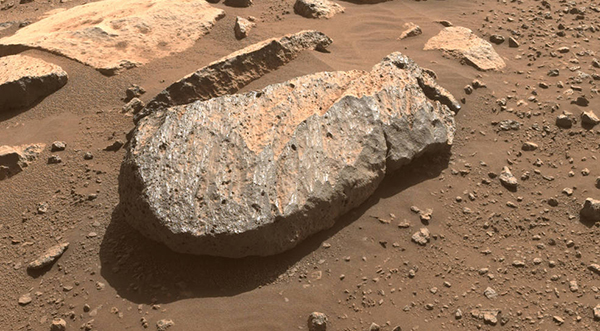Florida Tech Researchers Continue to Study Mars Architectures Built On Cycler Orbits
By Ryan Randall, Florida Tech News Bureau // March 27, 2022
originally pioneered by Buzz Aldrin and the university’s Aldrin Research Institute

BREVARD COUNTY • MELBOURNE, FLORIDA – Florida Tech researchers continue the study of Mars mission architectures built on cycler orbits originally pioneered by Buzz Aldrin and the university’s Aldrin Research Institute.
The process involves a cycler spacecraft that would stay in an elliptical orbit around the Sun, performing regular fly-bys of Earth and Mars.
A crew transfer vehicle would lift off from Earth during one of those fly-bys, catch up with the cycler to deliver the crew, and ultimately transport the crew from the cycler to a low Mars orbit.
After the crew finishes its Mars mission, the crew transfer vehicle and cycler will then be used in reverse order to get the crew back to Earth and pick up the next expedition.
In their paper “Design Considerations for an Earth-Mars Cycler Spacecraft Using the S1L1 Cycler,” aerospace engineering associate professors Markus Wilde and Brian Kish, along with aerospace engineering graduate student Bhumika Patel, discuss the design considerations for a deep-space transfer spacecraft using the ballistic S1L1 cycler trajectory.
The paper was published in The Journal of Spacecraft and Rockets and builds upon previous research published in 2020.
While the initial concept called for one cycler, research in this current paper found at least two cyclers are needed for round-trip missions with acceptable duration.
The paper also noted a cycle-based architecture is less suitable for initial Mars exploration than for a sustained, continuous Mars exploration campaign.
The cycler trajectory favors one leg of the journey between the planets with a short travel time of 154 days, as compared to 180–260 days typical for direct Earth-Mars transfers.
However, the return trip on the same cycler would take almost 900 days, which is unacceptable for keeping the crew healthy and supplied. Therefore, two cycler spacecraft are required, one for a short trip from Earth to Mars, and one for a short return trip.
The cycler concept presents challenges, as the single cycler gives travelers a short leg from Earth to Mars and then a long one back, which is not useful for human exploration because the explorers would spend almost 1,000 days in that spacecraft.

For the investment into the spacecraft to make sense, each one was assumed to be in operation for 30 years or 15 complete Earth-Mars-Earth transits. Considerations such as these drive the size, weight, and power required for the spacecraft.
The paper sized the subsystems of the cycler spacecraft using a bottom-up approach based on data collected by the space industry and space agencies over decades.
The researchers also looked at the requirements for the cycler spacecraft, such as the total mass for that spacecraft and what would be needed to insert it into an orbit.
The team also compared the proposed cycle spacecraft design with the NASA spacecraft design for the direct earth-to-Mars flights.
The team found that a spacecraft for the cycler could be designed that is not that much bigger, heavier, or expensive than NASA’s reference design, but it wouldn’t allow travelers to do the regular round trip with one cycler.
“As the study progressed it was surprising to see that the mass penalty for a cycler is actually manageable compared to existing spacecraft designs,” said Wilde, the lead author.
“Launching such a spacecraft is doable and actually reasonable, but only if you use it for a sustained Mars exploration campaign spanning decades, not just for a handful of flag-raising missions.”
CLICK HERE FOR BREVARD COUNTY NEWS














